- Home
- Piers Anthony
What Fears Become: An Anthology from The Horror Zine
What Fears Become: An Anthology from The Horror Zine Read online
WHAT FEARS BECOME
An Anthology from The Horror Zine
Edited by Jeani Rector
WHAT FEARS BECOME
Copyright © 2011 by various authors and Jeani Rector, The Horror Zine. All Rights Reserved.
No part of this publication may be reproduced, stored in a retrieval system, or transmitted, in any form or by any means, electronic, mechanical, photocopying, recording, or otherwise, without prior written permission from the authors.
This is a work of fiction. Names, characters, places and incidents either are the product of the author's imagination or are used fictitiously. And any resemblance to actual persons, living, dead (or in any other form), business establishments, events, or locales is entirely coincidental.
http://www.thehorrorzine.com
FIRST EDITION ebook
Imajin Books - http://www.imajinbooks.com
August 2011
ISBN: 978-1-926997-18-6
Cover designed by Sapphire Designs -
http://www.designs.sapphiredreams.org
Praise for WHAT FEARS BECOME
"You won't be able to put WHAT FEARS BECOME down, not even for a second…Darkly humorous…Each spine-tingling chiller takes the reader into the depths of eerie imaginations…Thanks to Rector, get used to names such as Philip Roberts, Larry Green, and Cheryl Kaye Tardif because you're going to be hearing from them in the future!"―Jorge Solis, Fangoria
"There's nothing like a good scary story, except a lot of them, collected in an anthology from some of our top horror/suspense writers. So read one and be scared, or read a few and be good and scared, or read the whole book and lock all the doors and stay up all night listening to the house creak…They're terrific."―William Martin, New York Times bestselling author of Back Bay
"What Fears Become is a bold, brilliant collection of some of the most innovative and eloquent voices in modern horror. A musthant read for any avid horror fan."―Gabrielle Faust, author of Eternal Vigilance
"What an inspired mix of energetic and captivating horror. Here is work from acclaimed writers and a host of talented newcomers. This anthology is like a fearful breath from an ancient crypt; enter if you dare!"―Trevor Denyer, Midnight Street Magazine
"Dip in and you're hooked. WHAT FEARS BECOME is a high-bar mix of new and established talent."―Stephen Gallagher, author of Kingdom of Bones
"From the producers of The Horror Zine, this anthology of frightful fiction pulls in an impressive cast including some of the old masters of the genre, several bright luminaries and a handful of newcomers, promising that the top quality of the fiction, poetry and art is the only thing that matters."―Djibril al-Ayad, editor of The Future Fire
"This anthology showcases unusual and deeply disturbing horror fiction by numerous distinguished authors. Ramsey Campbell's story, in particular, will surely strike terror into the hearts of all aspiring writers."―Margaret L. Carter, author of Different Blood: The Vampire as Alien
"The stories in "What Fears Become" epitomize what Stephen King has called "the bad death." Whether they're jealous mirrors, irradiated vampires, clueless ghosts, or carnivorous homes, this anthology's shadows render the world a deadly place that gets most of its stories' protagonists in the end. Unless the protagonist is a monster—or already dead. That happens, too."―Paula R. Stiles, editor of Innsmouth Free Press
"The well crafted stories, and list of writers new and well known make WHAT FEARS BECOME a must read for horror lovers."―Selina Rosen, author of The Host trilogy
For the loyal readers of The Horror Zine
Acknowledgments
As editor of The Horror Zine, I would like to take this opportunity to thank all the talented writers, poets, and artists that make us what we are. There would be no The Horror Zine without all of you. I want to especially thank the best-selling professional writers who so generously and graciously lent us their works for this book.
I also want to thank all the hardworking and underpaid (think working for free!) editors of print and online magazines who strive diligently to give the writers, poets, and artists a venuein which to display their talents.
I particularly want to thank Trevor Denyer of Midnight Street Magazine for introducingme to Ramsey Campbell a couple of years ago, which basically started this whole adventure. I want to extend my thanks to Geoff Nelder for introducing me to Conrad Williams. I would like to thank Mattfrom the online forum Shocklines and also Ed from Cafe Doom for their unselfish devotion to giving people like me a venue to share my news and also to promote my endeavors.
I want to thank Trudy Hunter, Julia Cross, Sue Quiberg, Cheryl Babcock, and Kathleen Matranga for their continuing support. I would like to thank Heather Rector and Eric Rector for their refreshing uniqueness that never fails to inspire me.
And finally, I would also like to thank Cheryl Tardif, Lisa Hazard, Jennifer Johnson, Dean H. Wild and Toni Lopopolo for making this book possible.
Table of Contents
Foreword by Simon Clark: A Small Matter of Life and Death
Fiction
BAST by Christian A. Larsen
DOGLEG by Bentley Little
A BAD STRETCH OF ROAD by Dean H. Wild
THE HOUSE AT THE END OF SMITH STREET by Stephen M. Dare
GNAW by Lala Drona
REFLECTION OF EVIL by Graham Masterton
WANDERING DANIEL by Jagjiwan Sohal
NEXT TIME YOU'LL KNOW ME by Ramsey Campbell
3 AM by James Marlow
LOSING JUDY by Andy Mee
FISH NIGHT by Joe R. Lansdale
METHODS OF DIVORCE by Philip Roberts
AND BABY, YOU CAN SLEEP WHILE I DRIVE by Elizabeth Massie
CHUPACABRA by Ronald Malfi
THE ORPHANS OF LETHE by Rachel Coles
BONFIRE NIGHT by Chris Castle
THE PRODUCT by Bruce Memblatt
OUIJA by Cheryl Kaye Tardif
FRY DAY by Melanie Tem
THE CHAMBER by David Landrum
CHRISTENING by Scott Nicholson
LOST THINGS by Piers Anthony
A NEW DAY by Larry Green
RED KING by Jessica Handly
YOU SAID ALWAYS AND FOREVER by Richard Hill
UBIRR by Conrad Williams
BONES IN THE MEADOW by Tim Jeffreys
ADELLE'S NIGHT by David K. Ginn
BONES FOR A PILLOW by Alexandra Seidel
MALL WALKERS by Chris Reed
WHAT THE BLIND MAN SAW by C. Dennis Moore
Poetry
Emon Anthousis
Dennis Bagwell
John T. Carney
Teresa Ann Frazee
John Grey
Christopher Hivner
Jean Jones
Ron Koppelberger
Alec B. Kowalczyk
Joe R. Lansdale
Everett Madrid
Juan Perez
Nathan Rowark
Stephanie Smith
Paul Sohar
Peter Steele
Anna Taborska
Scott H. Urban
The Artists
Thomas Bossert
Ricardo Di Ceglia
Kalynn Kallweit
Daniel Kirk
Joseph Patrick McFarlane
Felicia Olin
Tatomir Pitariu
Elizabeth Prasse
April A. Taylor
Editor's Corner
HORRORSCOPE by Jeani Rector
THE HOUSE ON HENLEY WAY by Jeani Rector
A SMALL MATTER OF LIFE AND DEATH
Foreword by Simon Clark
I want to talk to you about a mystery. An interesting and important mystery. One that is, well, a matter of life and death.
And what has this extraordinary volume, What Fears Become, got to do with that extraordinary mystery?
Because the book you hold in your hands is part of a unique gift that we enjoy as a species. That gift is 'story.' As far as we know, we are the only creatures to tell, invent, and enjoy stories. And stories are important. We owe our existence to them. They sustain. Interpret. Educate. Encourage. Give hope. They allow us to see through the eyes of our fellow humans. They nourish empathy. Stories develop the strength and breadth of our amazing imaginations. They give us the power, from time to time, to cheat death. They are vitally important to the human race. Stories mean life.
Many anthropologists will cite singing and dancing as being the glue that cemented early tribal society together. I believe our 'species survival and growth package' includes other vitally important elements, such as a talent for the visual arts, a compulsion for physical and mental games, and stories—our universal passion for the made-up tale. Fiction pumps through our veins.
Where's the origin of this apparent inborn need to tell and to hear stories? The mystery lies in the origins of this need. We can't say precisely where the first fable was spun. Or when. Perhaps a gene mutated in one of our ancestors two hundred thousand years ago. For some mysterious reason our great (many times great!) grandmother or grandfather found themselves saying words that broadly mean "Once upon a time." And then relating events that never actually happened, yet which contain iridescent truths that illuminate human life.
Soon I'm going to talk about What Fears Become. First, I should say something about my dramatic statement that stories are so important we owe our existence to them. After all, I can't glibly toss out the opinion "that stories are a matter of life and death" in your general direction, then saunter away, can I? So, Ladies and Gentlemen of the jury, I present my case. The facts are, at the time of this writing, scientifically accurate. Of course, I'm a writer of fiction (every cell of my body positively throbs with that 'story' gene: yours, too!), so I paint my facts onto the canvas of imagination.
Here we go. We're traveling back twenty thousand years. Back to a world of woolly mammoth and saber-toothed cats. Silently, we follow a lone figure limping through the forest. This is the last of the Neanderthals. The anatomy of the figure is typical of the Neanderthal species. A very stocky build. Sturdy legs. The jaw juts out fiercely. Large eyes peer from beneath prominent brow ridges. The arms are muscular, biceps are bulging. She is so powerful that she can easily snap the neck of a wild pig.
Her body language radiates confidence and strength. Her formidable torso is protected by a long cloak made from reindeer hides. She carries a spear tipped with a flint that's as sharp as a surgeon's scalpel. For months she has been searching for more of her kind. A quest doomed to failure. She can't possibly know that she is the last of her species. Nor would she understand that something happened in the last few generations that caused the Neanderthal to begin a headlong rush to extinction.
The last Neanderthal is living on borrowed time.
In the forest she hears voices. Though the language is unfamiliar, she is suddenly excited. Her species have communicated with each other in a remarkably sophisticated way for thousands of years, using spoken words and tongue clicks. Her heart pounds. This female is certain she has found another family grouping of Neanderthals. The chances of joining the group are slim—typically Neanderthal tribes are insular, they seldom interact—just the thought, however, of setting eyes on her own kind is so thrilling that she begins to run.
At the edge of the clearing the female pauses. Something is wrong. Yes, the men, women and children she sees walk on two legs, they call to one another, a couple are arguing, juveniles are laughing as they throw sticks into a tree. The figures wear animal skins, carry spears that are remarkably similar to the weapon she carries. Yet they are not the same as her species. Their bodies are so slender they seem almost fragile. Their faces are peculiar, too. They have small chins; the foreheads rise straight up instead of sloping back like those of her race.
The last Neanderthal is disappointed. These aren't of her blood. Yet she finds their behavior interesting. Although it is decidedly bizarre. Not much of it makes sense to her. Lack of food has made her drowsy. So why not settle down here in the bushes? Rest. Observe these delicate creatures for a while.
From her vantage point, concealed in the vegetation, she watches. The peculiar-looking creatures start a fire. They butcher a roe deer with flint knives. Soon they are enjoying a meal. Even though they have been hunting during the day they don't doze after the feast like Neanderthal hunters would do.
These eccentric individuals chase one another about the camp. The young men make a competitive game of jumping over a rock. Meanwhile, a group of children scratch lines in the dirt with twigs. She realizes that the lines resemble horses. This is very perplexing because her own species never did anything like this. Nor did they carve figures as a man appears to be doing right now to a section of mammoth tusk. Just as darkness pulls in, when all sensible Neanderthals would be bedding down for the night, these people start to move about the fire. They clap their hands in a rhythmic way. Sounds come from their delicate, little mouths. They seem to be saying the same words at the same time, then they begin to sway to the rhythm.
Song never featured in the Neanderthal way of life. Dance is alien to her.
After the dancing a silver-haired woman begins to speak. All the tribe gather round to listen. They are captivated by what she is saying. The last Neanderthal notices the expressions on the faces in the audience. She's incapable of figuring out that the Homo sapiens are listening to invented situations that befall a fictional character. And because other tribes of Homo sapiens are eager for new stories, different tribes meet and share their fables. Therefore, they don't experience the tribal isolation that has brought the socially shy Neanderthal to the brink of extinction.
The family group she watches from her hiding are vibrant, outgoing, and passionately interested in life. Their restless curiosity always means that they expand their contact amongst neighboring tribes, so the gene pool is ever-growing. These highly imaginative humans are equipped to survive, even flourish.
The female stares at the creatures listening to the story. The faces of the children shine with delight. They are learning without even realizing a lesson is being taught. Or that the muscles of imagination are being strengthened to the point imagination becomes a tool of incredible power in its own right.
The last Neanderthal continues to stare as the stars come out one by one. She no longer blinks. Not even when a spider begins to methodically spin a pure white shroud for her face.
II
Story. So very important. So vital to the survival of our species. And fiction is important to us individually. You probably remember the first story you heard that fascinated you, and invoked the power of your imagination. Certain films and TV dramas undoubtedly still linger in your mind, even though you saw them as a very young child.
I grew up loving movies that featured monsters, aliens, and robots. When I was three-years-old I watched a film on television that, for the first time, seemed to light up the atoms of my very being. For the life of me, I can't name the film, or the actors. But, wow! I can still remember the hulking, great robot that stomped down a metal ramp with so much force that sparks flew from its iron feet.
Bouncing up and down on the sofa, I shouted, "That's great! I'm going to watch it again next week!" The adults carefully explained to the diminutive Simon, with his wide, shining eyes, that it was a film, not a TV series. That it wouldn't be back next week. That didn't matter. Not at all! Because my imagination had been brought to life. Whenever I wanted, I could recall in vivid, dazzling, awesome detail tha
t huge robot clumping along, sparks blazing from its feet.
So, like my fellow human beings everywhere on Earth, I found my love of story. Books, comics, television, film, radio. Stories pulsated everywhere. My family told tall tales. My uncles had a never-ending supply of haunted house yarns. "Simon. Do you see that house by the canal? There are ghosts in there…" An uncle would point to the creepy old building and I'd believe every word.
Fiction nourished me as much as potatoes, gravy and the sweet puddings we were served at school. What I devoured most in the way of books were anthologies. Fortunately, the school library had a fine stock of ghost stories for children. I gobbled them up one after another. And birthdays brought me the Armada Ghost Book series.
And it was only later that I appreciated that many of the pieces I enjoyed were first printed in magazines, such as the nineteenth century monthly The Strand Magazine, and Weird Tales, hailing from the 1920s. These publications used the latest print technology to deliver their content in what was then a fresh and inventive way. The Strand Magazine not only published great text by the likes of Sir Arthur Conan Doyle, there were also dramatic illustrations of soldiers brandishing swords, or explosions, or thrilling cliff-top fights. Weird Tales boasted vivid covers, which were broadly based on the Beauty and the Beast theme. Gorgeous females being menaced by alien creatures were a resounding favorite. Back in the gloomy depression between the World Wars they would have screamed excitement from the newsstands. Buy Me! I can take you away from your worries! Readers would be carried away on strange adventures from the pens of H.P Lovecraft, Robert E. Howard and the top pulp writers of the day. Imaginations would blaze; the reader would step into the hero's shoes. They'd be empowered. Even when the reader was back in the real world again after closing the magazine, they could face the day-to-day struggles with renewed energy and hope.

 Serial
Serial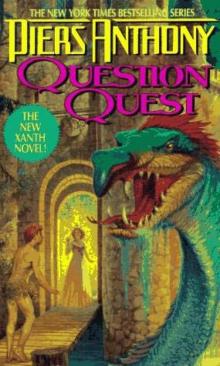 Question Quest
Question Quest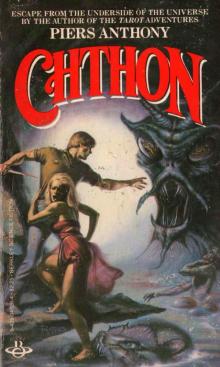 Chthon
Chthon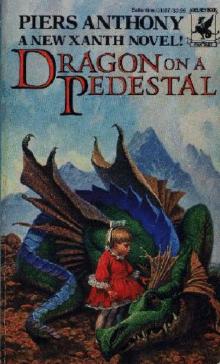 Dragon on a Pedestal
Dragon on a Pedestal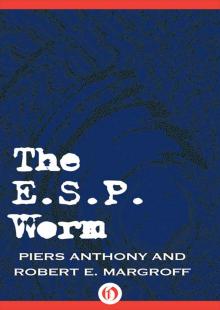 E. S. P. Worm
E. S. P. Worm Hope of Earth
Hope of Earth The Series Boxed Set
The Series Boxed Set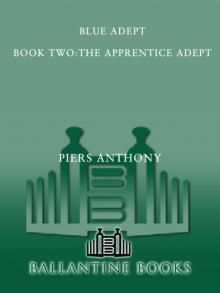 Blue Adept
Blue Adept The Sopaths
The Sopaths Beetle Juice
Beetle Juice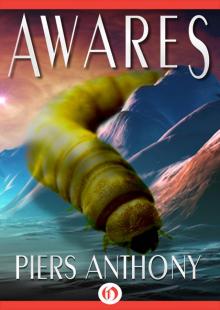 Awares
Awares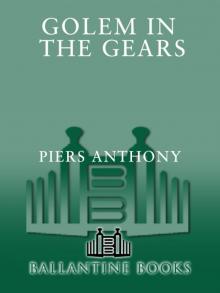 Golem in the Gears
Golem in the Gears Geis of the Gargoyle
Geis of the Gargoyle Bamboo Bloodbath and Ninja's Revenge
Bamboo Bloodbath and Ninja's Revenge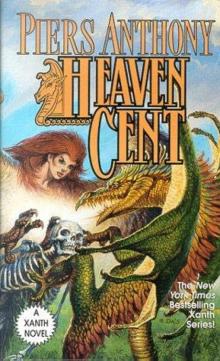 Heaven Cent
Heaven Cent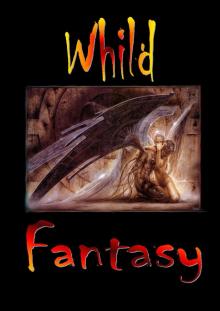 Neq the Sword
Neq the Sword Pandora Park
Pandora Park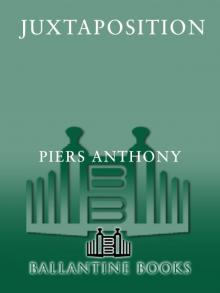 Juxtaposition
Juxtaposition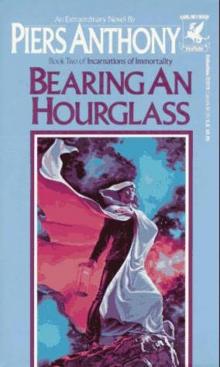 Bearing an Hourglass
Bearing an Hourglass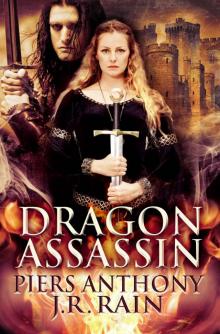 Dragon Assassin
Dragon Assassin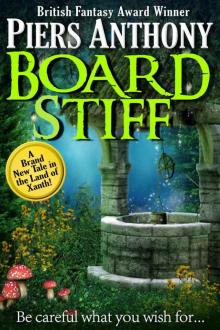 Board Stiff
Board Stiff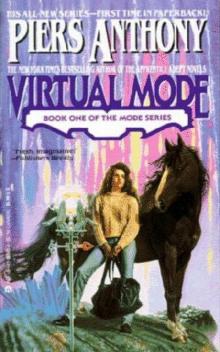 Virtual Mode
Virtual Mode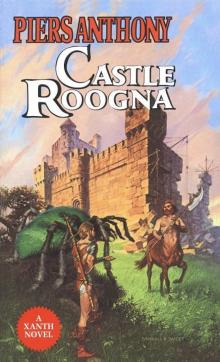 Castle Roogna
Castle Roogna Aliena Too
Aliena Too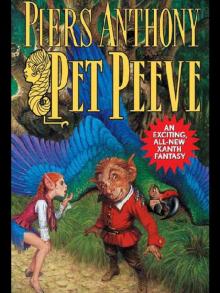 Pet Peeve
Pet Peeve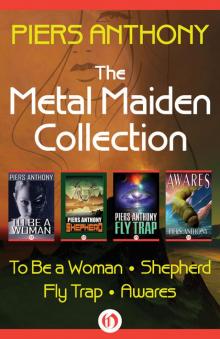 The Metal Maiden Collection
The Metal Maiden Collection Volk
Volk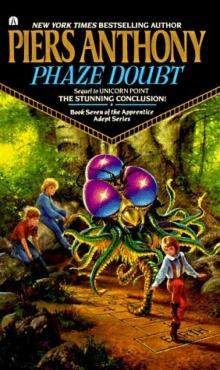 Phaze Doubt
Phaze Doubt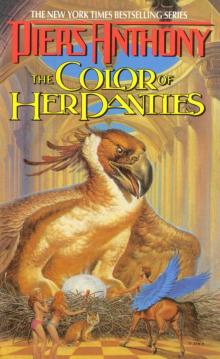 The Color of Her Panties
The Color of Her Panties Amazon Slaughter and Curse of the Ninja Piers Anthony
Amazon Slaughter and Curse of the Ninja Piers Anthony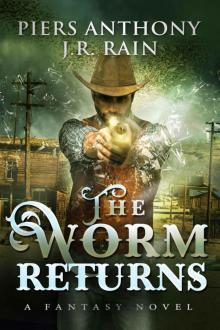 The Worm Returns
The Worm Returns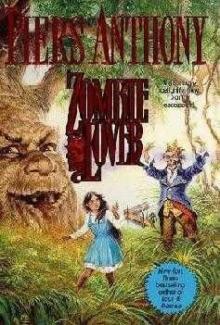 Zombie Lover
Zombie Lover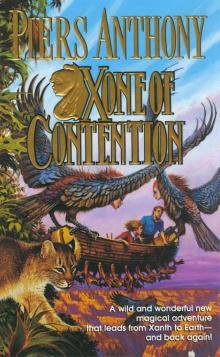 Xone of Contention
Xone of Contention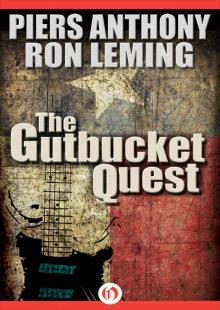 The Gutbucket Quest
The Gutbucket Quest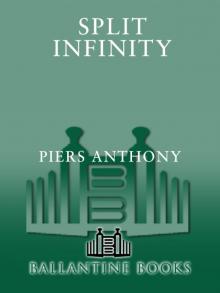 Split Infinity
Split Infinity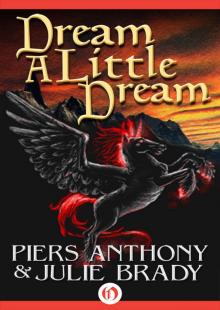 Dream a Little Dream: A Tale of Myth and Moonshine
Dream a Little Dream: A Tale of Myth and Moonshine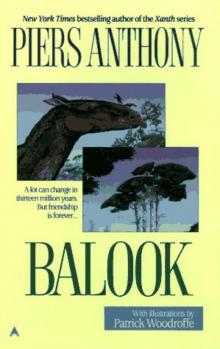 Balook
Balook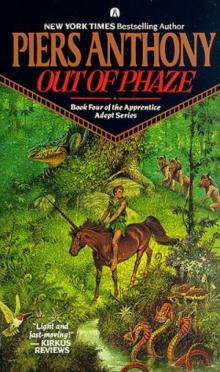 Out of Phaze
Out of Phaze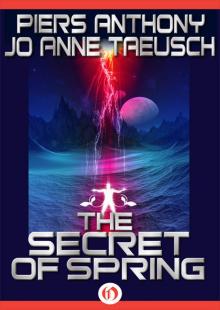 The Secret of Spring
The Secret of Spring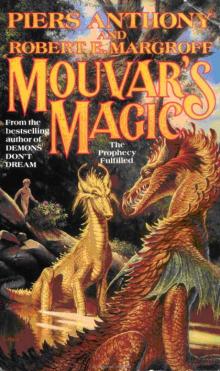 Mouvar's Magic
Mouvar's Magic Cube Route
Cube Route Mercenary
Mercenary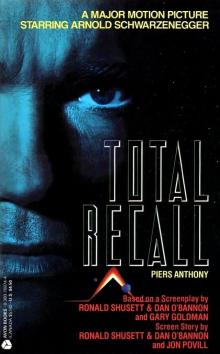 Total Recall
Total Recall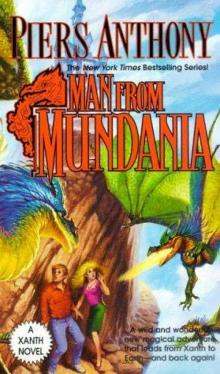 Man From Mundania
Man From Mundania The Magic Fart
The Magic Fart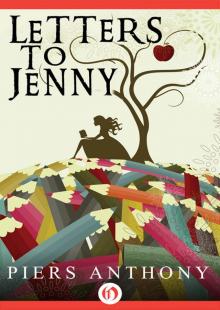 Letters to Jenny
Letters to Jenny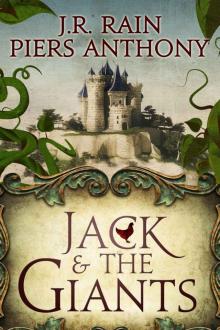 Jack and the Giants
Jack and the Giants Executive
Executive Robot Adept
Robot Adept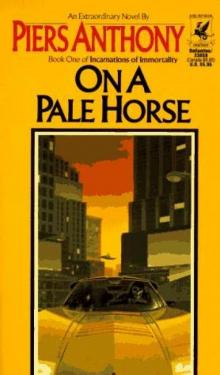 On A Pale Horse
On A Pale Horse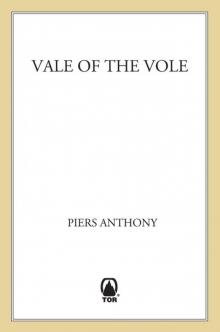 Vale of the Vole
Vale of the Vole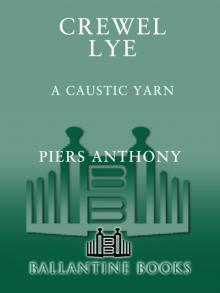 Crewel Lye
Crewel Lye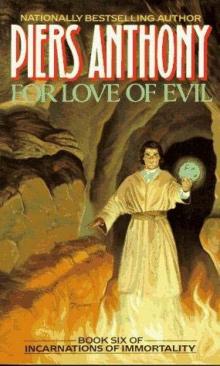 For Love of Evil
For Love of Evil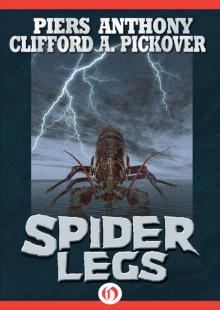 Spider Legs
Spider Legs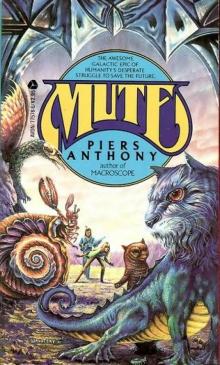 Mute
Mute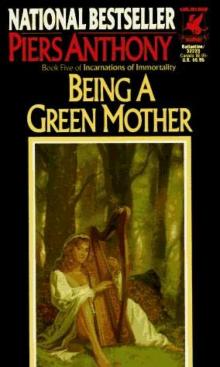 Being a Green Mother
Being a Green Mother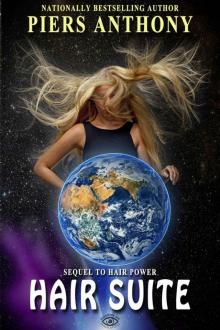 Hair Suite
Hair Suite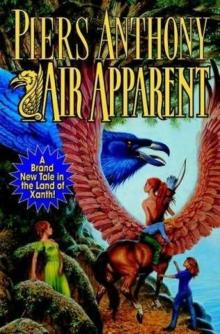 Air Apparent
Air Apparent Politician
Politician Aliena
Aliena Phthor
Phthor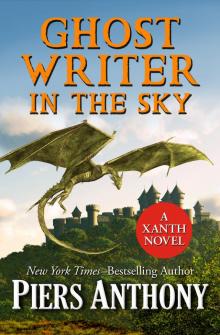 Ghost Writer in the Sky
Ghost Writer in the Sky Pornucopia
Pornucopia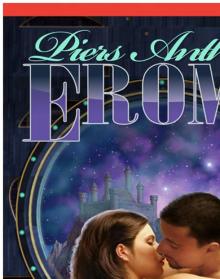 Eroma
Eroma Shepherd
Shepherd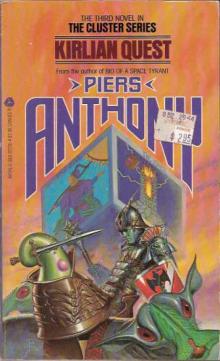 Kirlian Quest
Kirlian Quest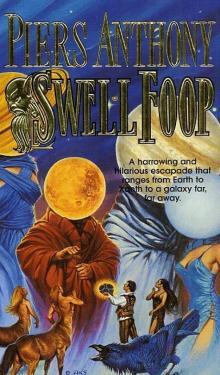 Swell Foop
Swell Foop God of Tarot
God of Tarot If I Pay Thee Not in Gold
If I Pay Thee Not in Gold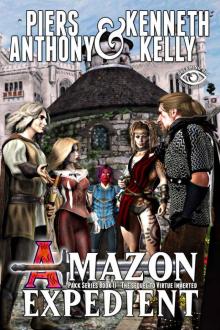 Amazon Expedient
Amazon Expedient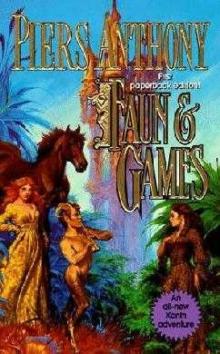 Faun & Games
Faun & Games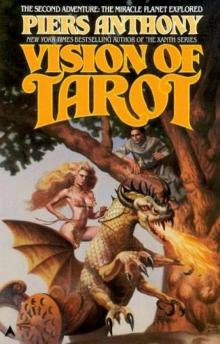 Vision of Tarot
Vision of Tarot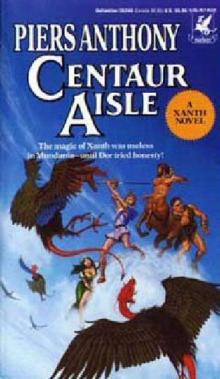 Centaur Aisle
Centaur Aisle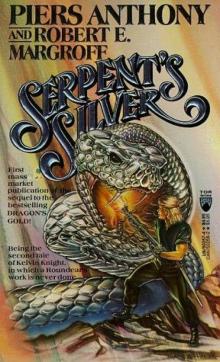 Serpent's Silver
Serpent's Silver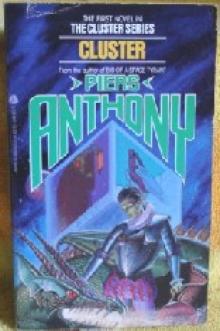 Cluster
Cluster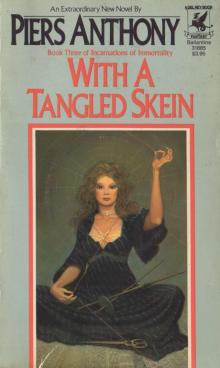 With a Tangled Skein
With a Tangled Skein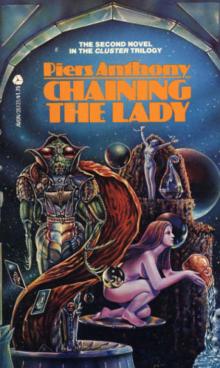 Chaining the Lady
Chaining the Lady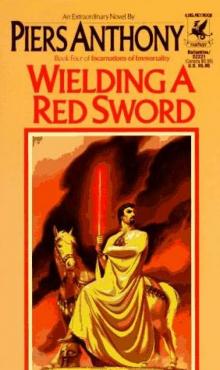 Wielding a Red Sword
Wielding a Red Sword Key to Chroma
Key to Chroma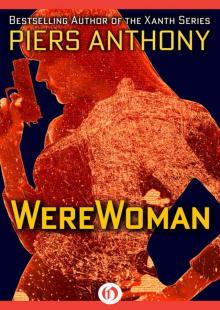 WereWoman
WereWoman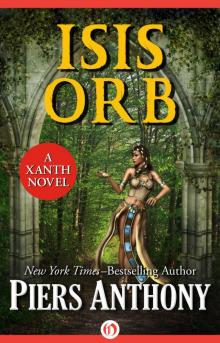 Isis Orb
Isis Orb Hair Peace
Hair Peace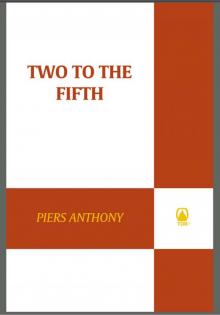 Two to the Fifth
Two to the Fifth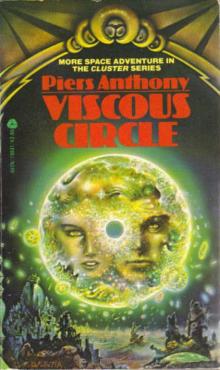 Viscous Circle
Viscous Circle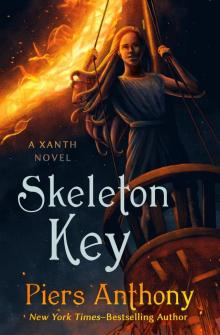 Skeleton Key
Skeleton Key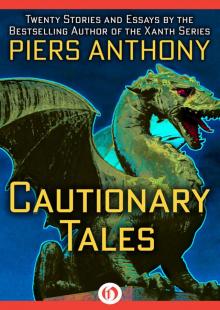 Cautionary Tales
Cautionary Tales The Source of Magic
The Source of Magic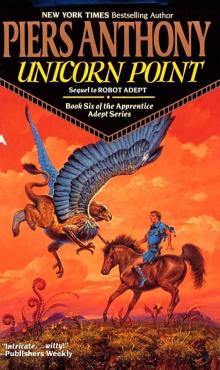 Unicorn Point
Unicorn Point Writer's Retweet
Writer's Retweet Demons Don't Dream
Demons Don't Dream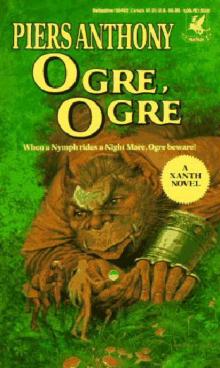 Ogre, Ogre
Ogre, Ogre The Iron Maiden
The Iron Maiden Tortoise Reform
Tortoise Reform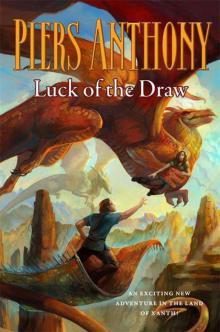 Luck of the Draw
Luck of the Draw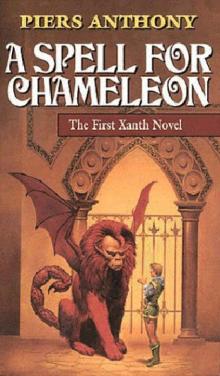 A Spell for Chameleon
A Spell for Chameleon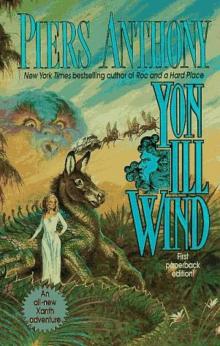 Yon Ill Wind
Yon Ill Wind Currant Events
Currant Events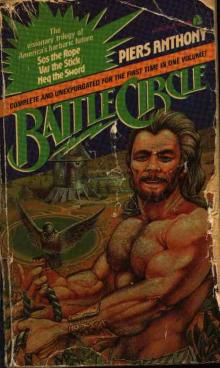 Var the Stick
Var the Stick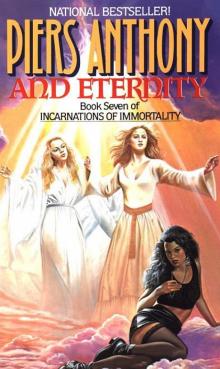 And Eternity
And Eternity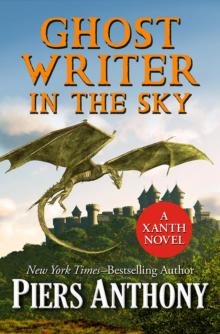 Kiai! & Mistress of Death
Kiai! & Mistress of Death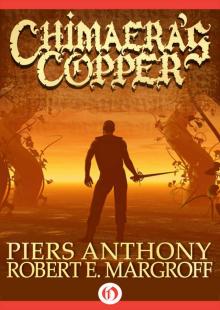 Chimaera's Copper
Chimaera's Copper Refugee
Refugee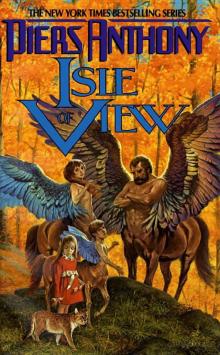 Isle of View
Isle of View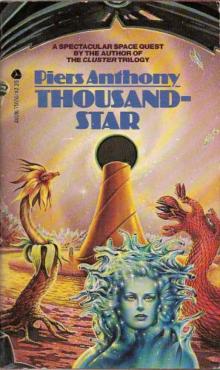 Thousandstar
Thousandstar Mer-Cycle
Mer-Cycle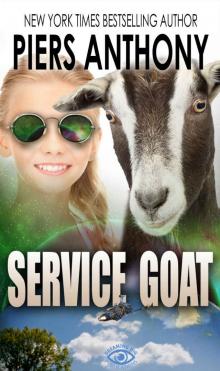 Service Goat
Service Goat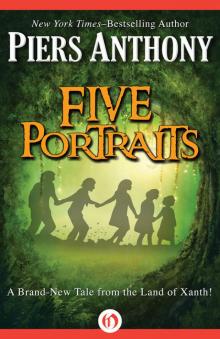 Five Portraits
Five Portraits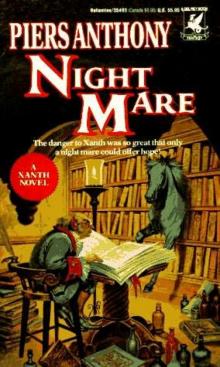 Night Mare
Night Mare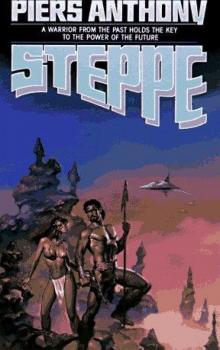 Steppe
Steppe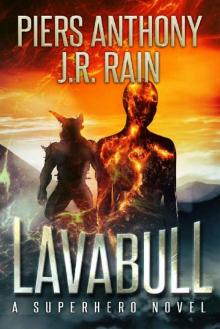 Lavabull
Lavabull Well-Tempered Clavicle
Well-Tempered Clavicle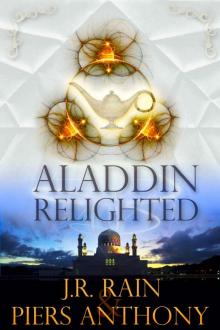 Aladdin Relighted
Aladdin Relighted Aladdin and the Flying Dutchman
Aladdin and the Flying Dutchman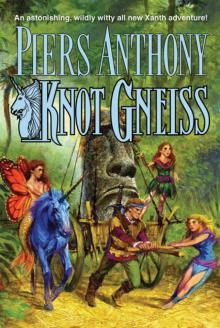 Knot Gneiss
Knot Gneiss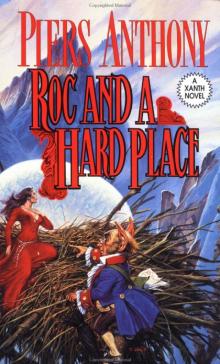 Roc and a Hard Place
Roc and a Hard Place Aladdin Sins Bad
Aladdin Sins Bad Flytrap
Flytrap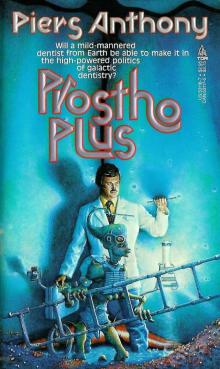 Prostho Plus
Prostho Plus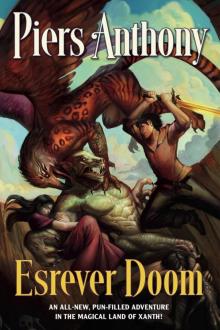 Esrever Doom
Esrever Doom Hair Power
Hair Power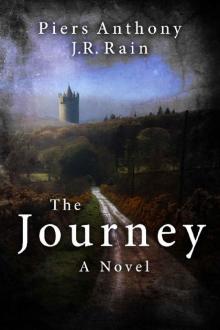 The Journey
The Journey Virtue Inverted
Virtue Inverted Of Man and Manta Omnibus
Of Man and Manta Omnibus Trail Mix: Amoeba
Trail Mix: Amoeba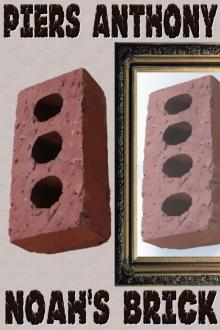 Noah's Brick
Noah's Brick Odd Exam
Odd Exam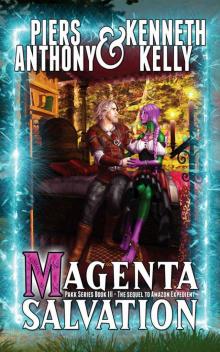 Magenta Salvation
Magenta Salvation Jest Right
Jest Right Fire Sail
Fire Sail Chthon a-1
Chthon a-1 Amoeba
Amoeba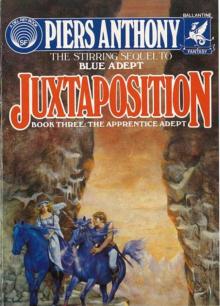 Juxtaposition aa-3
Juxtaposition aa-3 Pira
Pira THE CATERPILLARS QUESTION
THE CATERPILLARS QUESTION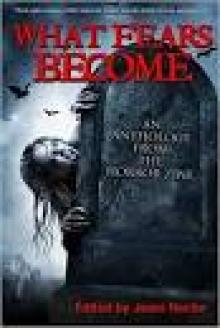 What Fears Become: An Anthology from The Horror Zine
What Fears Become: An Anthology from The Horror Zine Bio of a Space Tyrant Vol. 3. Politician
Bio of a Space Tyrant Vol. 3. Politician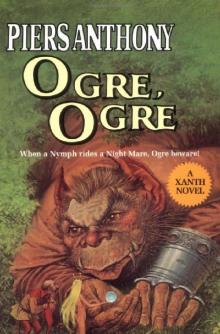 Ogre Ogre x-5
Ogre Ogre x-5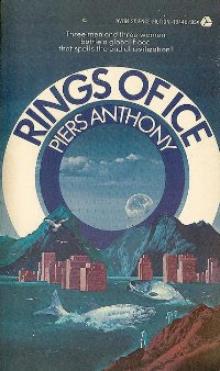 Rings of Ice
Rings of Ice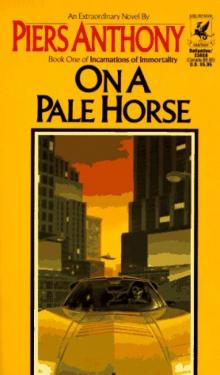 On a Pale Horse ioi-1
On a Pale Horse ioi-1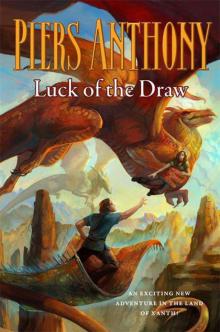 Luck of the Draw (Xanth)
Luck of the Draw (Xanth)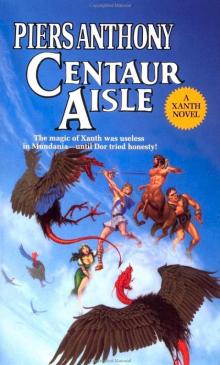 Centaur Aisle x-4
Centaur Aisle x-4 Thousandstar (#4 of the Cluster series)
Thousandstar (#4 of the Cluster series)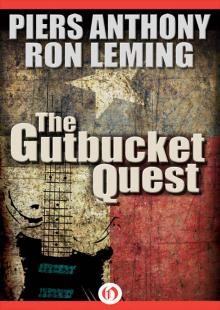 Gutbucket Quest
Gutbucket Quest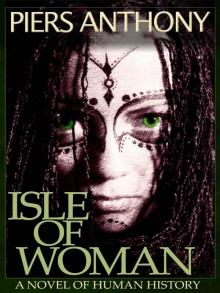 Isle of Woman (Geodyssey)
Isle of Woman (Geodyssey)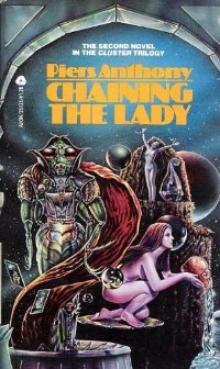 Chaining the Lady c-2
Chaining the Lady c-2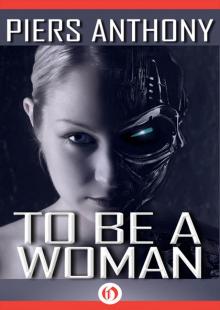 To Be a Woman
To Be a Woman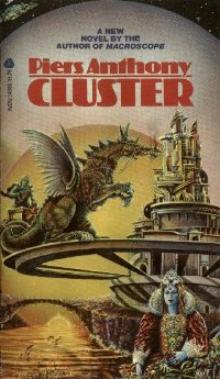 Cluster c-1
Cluster c-1 Battle Circle 2 - Var the Stick
Battle Circle 2 - Var the Stick Mercenary (Bio of a Space Tyrant Book 2)
Mercenary (Bio of a Space Tyrant Book 2)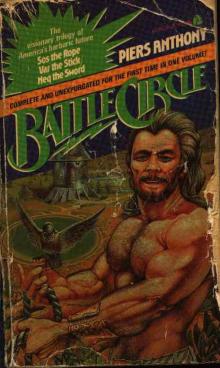 Battle Circle 1 - Sos the Rope
Battle Circle 1 - Sos the Rope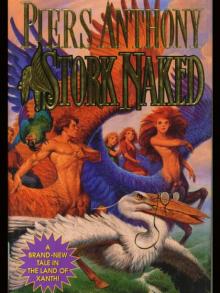 Xanth 30 - Stork Naked
Xanth 30 - Stork Naked Secret of Spring
Secret of Spring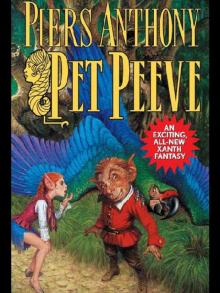 Xanth 29 - Pet Peeve
Xanth 29 - Pet Peeve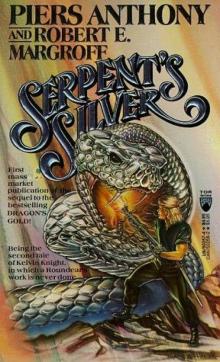 Serpents's Silver
Serpents's Silver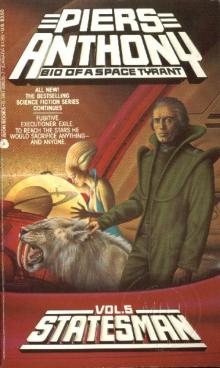 Statesman by Piers Anthony
Statesman by Piers Anthony Out of Phaze aa-4
Out of Phaze aa-4 Amazon Slaughter & Curse of the Ninja
Amazon Slaughter & Curse of the Ninja